Over 600-Year-Old Astronomical Clock In Prague – The World’s Oldest Working Astronomical Clock
The Astronomical Clock, fondly known as The Orloj, is not just a timepiece but a marvel of medieval engineering and artistry.
It was attached to the southern wall of the Old Town Hall in the Old Town Square, Prague, the capital of the Czech Republic.
Dating back over 600 years, it remains one of the oldest functional astronomical clocks globally, captivating visitors with its intricate design and captivating hourly performances.
The construction of the Astronomical Clock
The Astronomical Clock holds a rich history spanning over six centuries. It was crafted in 1410 by clockmaker Mikuláš of Kadaň and mathematician Jan Šindel, and its mechanical clock and astronomical dial are the oldest parts.
Over time, additions like the calendar dial and Gothic sculptures adorned its facade.

Legend once wrongly credited its construction to Jan Růže, but records later clarified Mikuláš and Šindel as the creators.
The clock endured damage during historical events like the Prague Uprising in 1945 but was restored, including a major renovation in 2018.
In recent years, controversies arose over restoration work, with concerns about alterations to its artwork.
Despite these challenges, The Orloj remains a beloved symbol of Prague’s heritage, captivating visitors with its timeless charm and enchanting performances.
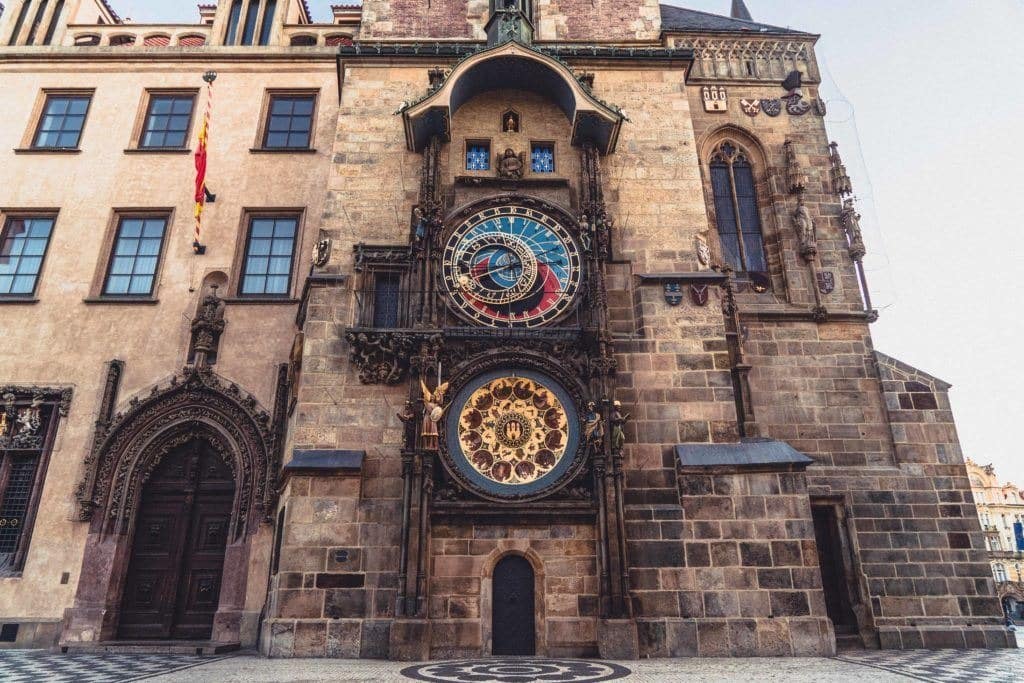
Architecture of the Astronomical Clock
Astronomical Dial
The astronomical dial is the oldest part of the clock.
It acts like a mechanical astrolabe that displays time, the position of the sun and moon in the sky, and the moon’s phases. The dial features:
- Stationary Background:
Represents Earth and the local sky view. The blue circle in the center indicates Earth, while the upper blue area shows the sky above the horizon. The red and black areas indicate parts of the sky below the horizon. The Sun icon moves over these areas to indicate day, night, dawn, and dusk.
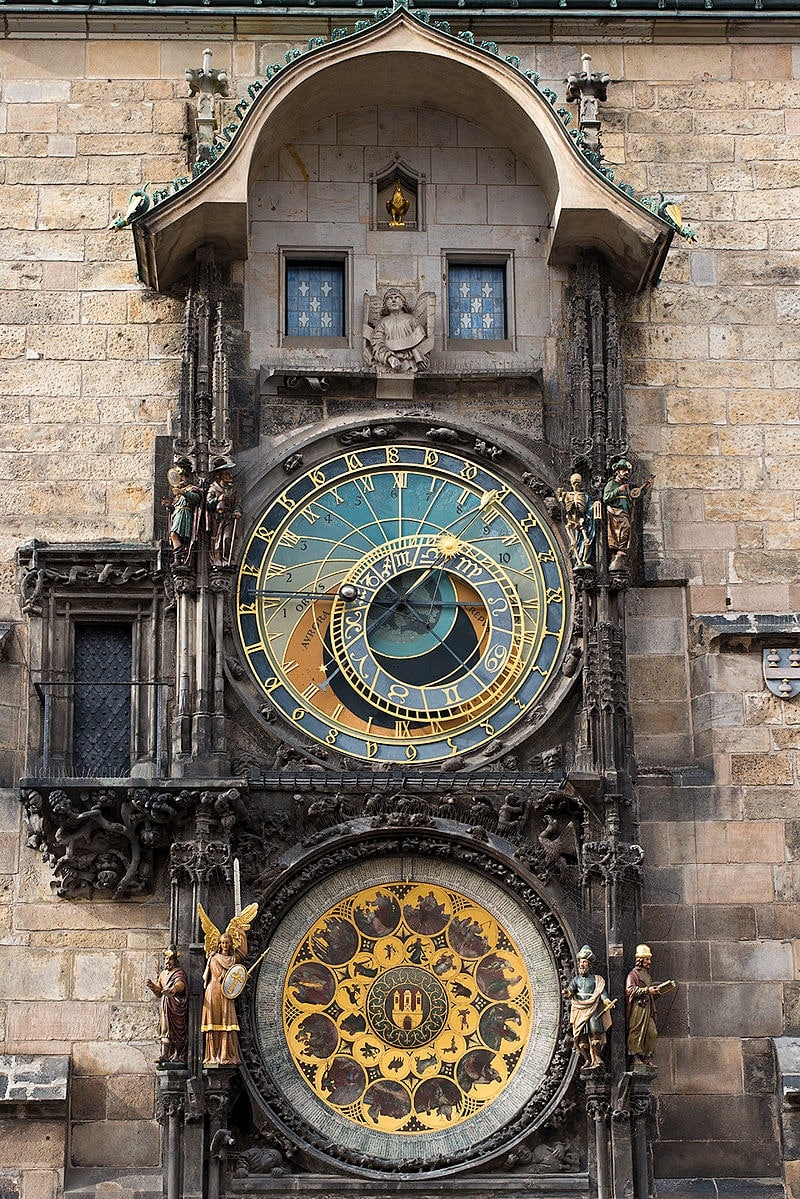
- Golden Roman Numerals:
Display local Prague time. Curved golden lines divide the dial into 12 unequal hours, varying as the days lengthen or shorten.
- Zodiacal Ring:
Shows the Sun’s position on the ecliptic, with signs of the zodiac displayed counterclockwise. A small golden star indicates the vernal equinox.

Time Scales
Old Czech Time Scale: Golden Schwabacher numerals on a black background show Old Czech Time, where 24 marks sunset. This ring moves to reflect seasonal changes in sunset times.
Sun and Moon
- Sun:
The Sun icon moves around the zodiacal circle, indicating its position on the ecliptic. It shows the time in local Prague time, unequal hours, and Old Czech Time. Its distance from the center of the dial shows sunrise and sunset times.
- Moon:
The Moon icon, showing lunar phases, moves much faster than the Sun due to its orbit around Earth. The unique mechanism inside the Moon sphere shows lunar phases with high accuracy, deviating by only one day every five years.
Animated Figures
The clock is adorned with moving figures that activate on the hour:
- Vanity: A figure admiring itself in a mirror.
- Greed: A miser holding a bag of gold.
- Death: A skeleton striking the hour.
- Lust: A Turkish figure representing earthly pleasures.
Above the clock, statues of the Twelve Apostles appear every hour. The windows slide aside to reveal pairs of Apostles, missing James the Great and Matthew, but including Paul and Barnabas.
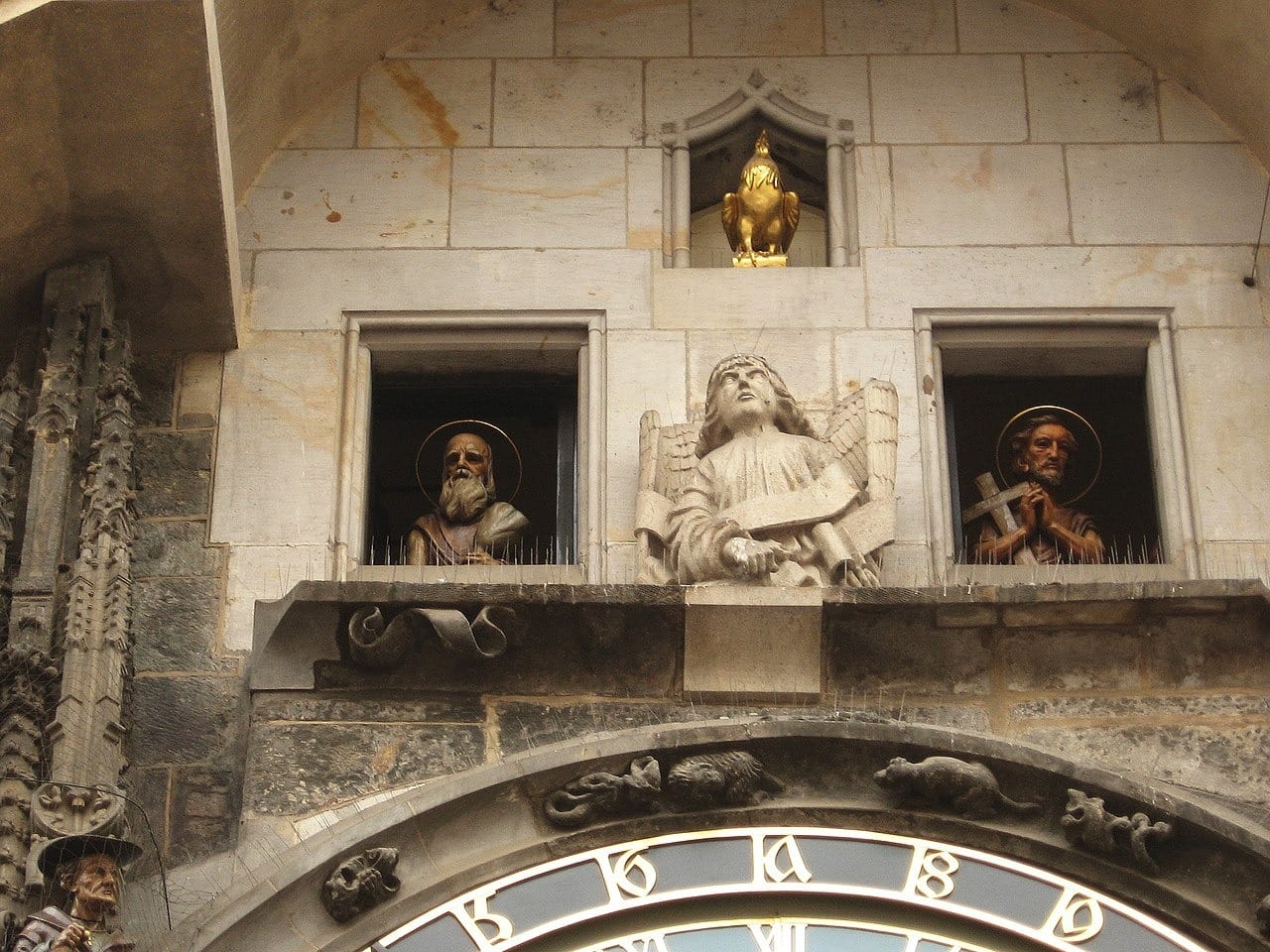
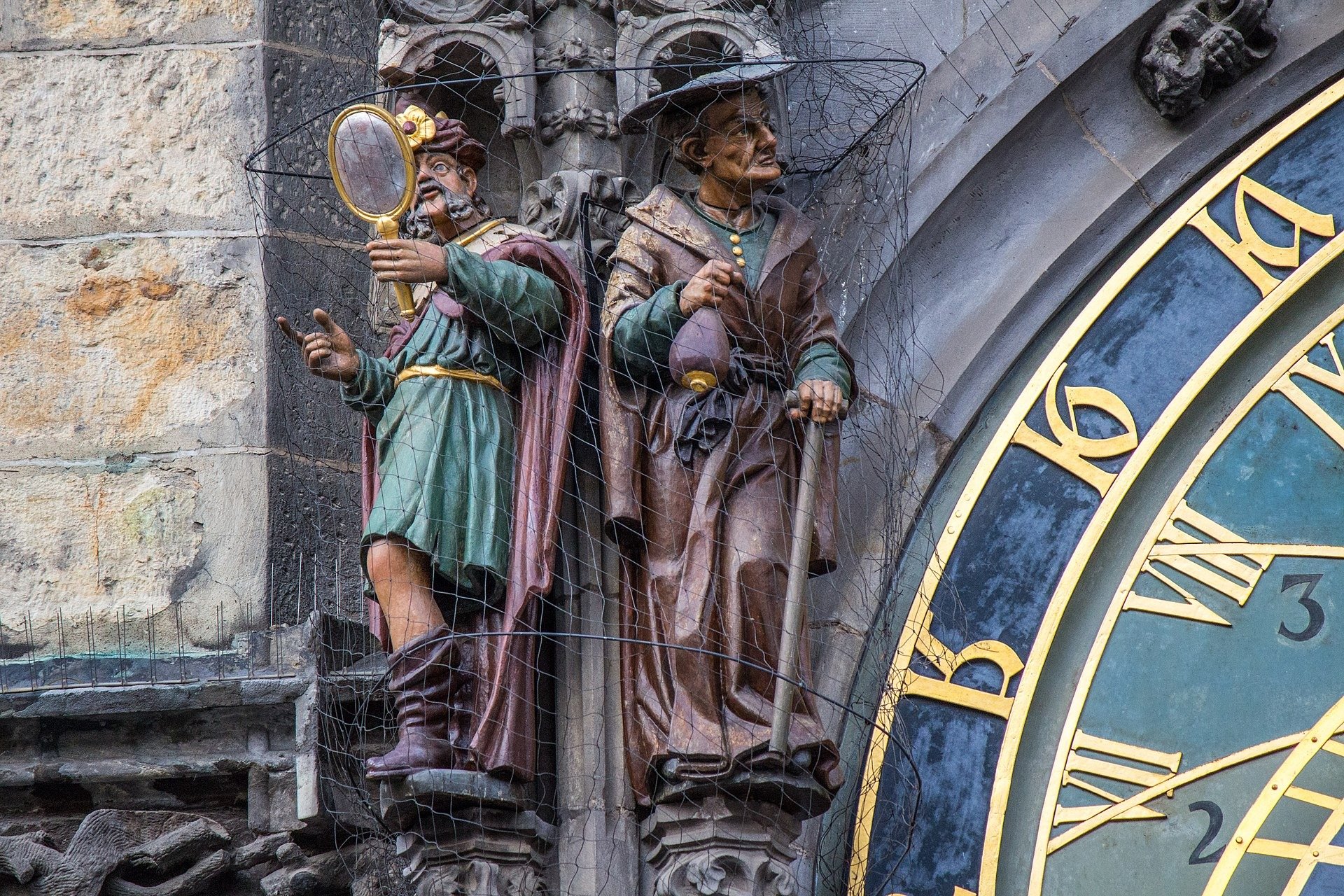
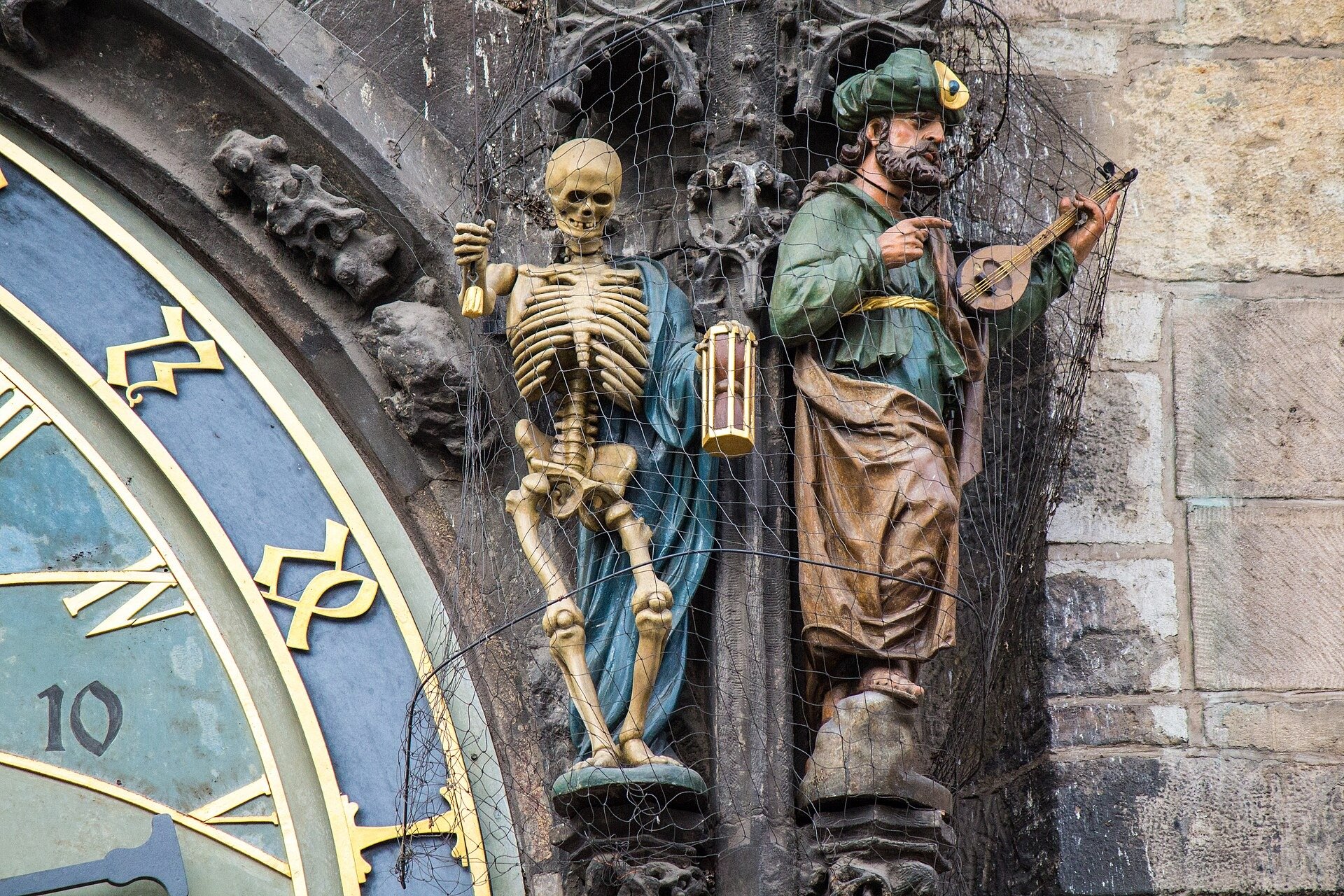
Calendar
Below the clock, the calendar plate, added around 1490, shows allegories of the months and zodiac signs. It was replaced by a copy in 1880, with the original stored in the Prague City Museum. Surrounding the calendar are fixed holiday names and 365 saints.
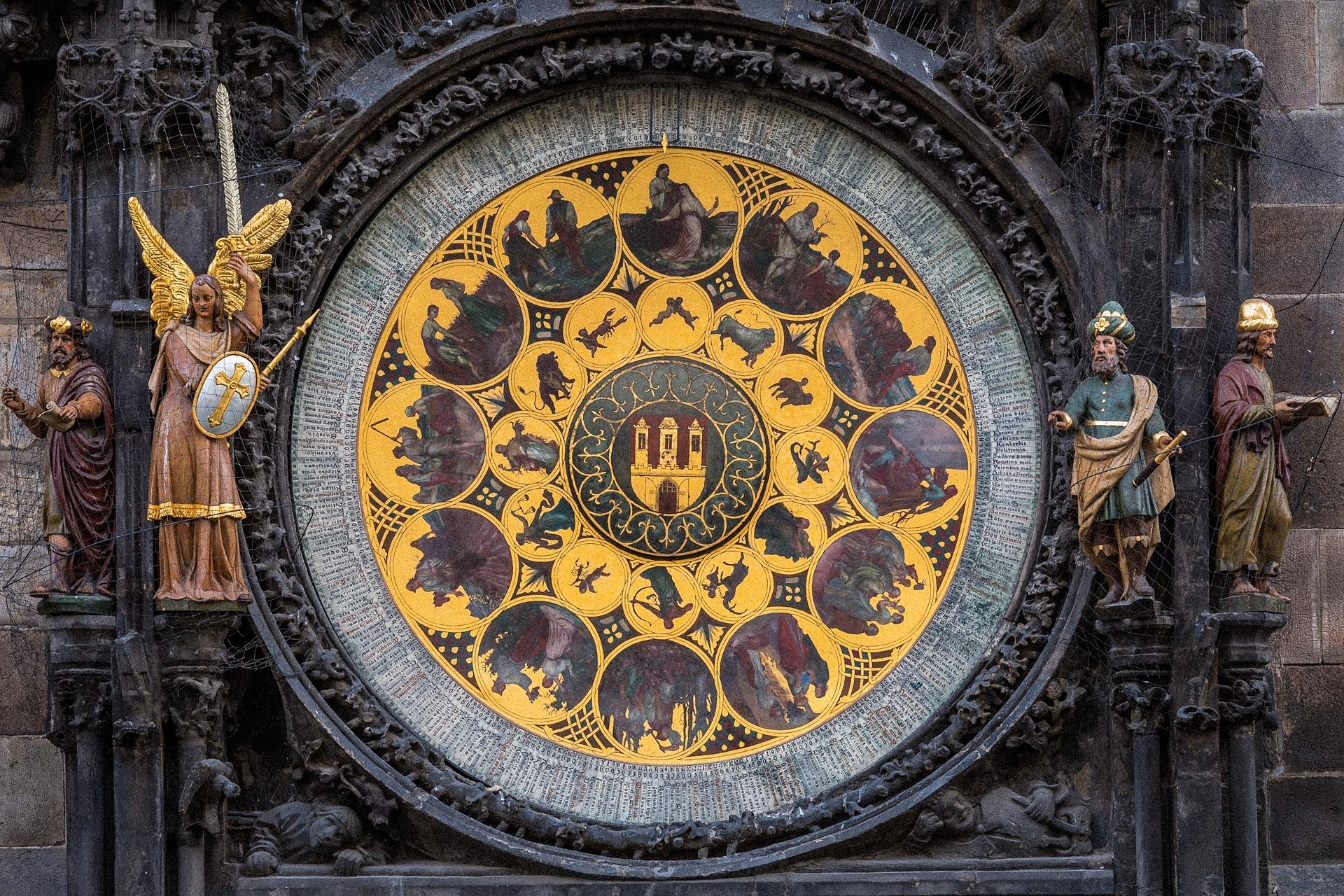
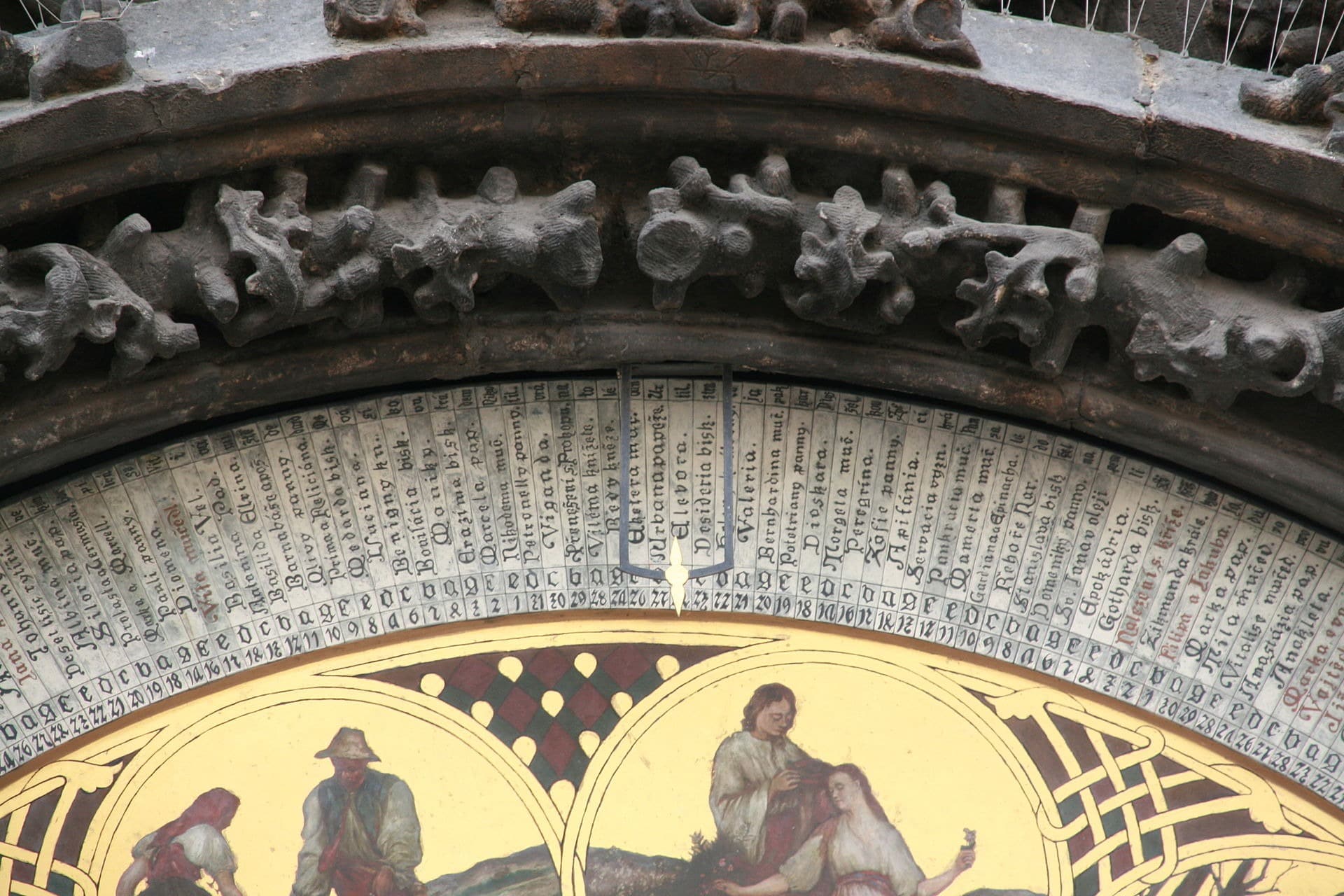
Legends of the Prague Astronomical Clock
Here are some of the most popular and fascinating legends:
- Legend of Master Hanuš
One famous legend credits Master Hanuš, rather than Mikuláš of Kadaň, with creating the Orloj.
According to the story, Hanuš built a unique clock for the councilors of Prague.
Fearing he might replicate his masterpiece elsewhere, they had him blinded to prevent this.
In revenge, Hanuš stopped the clock, and it remained non-functional for over a century.
- Legend of the Skeleton
Another legend involves the skeleton figure on the clock. It was believed that if the clock stopped running for a long time, the Czech nation would face hard times, with the skeleton nodding to confirm this.
According to the legend, a boy born on New Year’s night could save the nation by running from Týn Church to the town hall before the clock’s final strike, breaking the skeleton’s curse.
- A Sign of Hope
In some stories, the skeleton symbolizes hope. Above the clock are two small windows that once led to a jail for aristocrats.
One imprisoned knight saw a sparrow trapped in the skeleton’s jaws when the clock struck.
When the bird was released an hour later, the knight believed he too would be freed. Miraculously, the people of Prague pardoned him, making the skeleton a symbol of hope.

